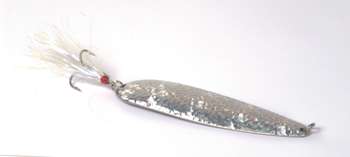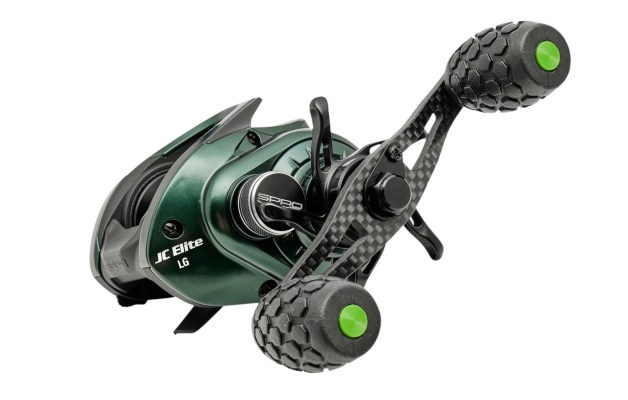
This final installment on the Flutter Spoon reveals how Lake Fork guide Rick Loomis fishes a giant spoon throughout the year.
Once you’ve located some promising structure with your sonar, it’s time to start lobbing the heavy metal. While late fall is the best time to throw a big spoon, Loomis starts throwing them immediately after the spawn.
“When you’ve got fish that are spawned out, they move deeper like everyone says they do,” Loomis says. “In my experience (16 years on Fork), they’re pretty close to the bottom out a way from the spawning flat.”
When the bass are hugging the bottom, Loomis works the spoon similar to a jig. As an example, if a school of bass is 2 feet off the bottom, Loomis will cast to them and let the spoon flutter to a dead stop on the bottom. He will then crank the reel twice to get it about 2 feet off the bottom, then let the bait pull the rod down again as it flutters. Then simply repeat.
The bass will be on or near the bottom after the spawn and as the water cools toward winter. During the warm months, bass are likely to suspend. When they’re suspended, Loomis says you need to keep the spoon in the strike zone, something that has always been a challenge for anglers.
“Say it’s July and the fish are suspended in 8 feet and are 2 feet over a bait ball. They’re waiting for a detachment of shad to break away so they can attack it,” Loomis says. “You want to cast past the school and let the spoon hit bottom, and then reel it up seven or eight cranks and through the bait; that’s when you’ll get bit.”
To keep the spoon fluttering at the appropriate depth, Loomis advises you work it like a crankbait by lifting and reeling, then stopping every few cranks to let it flutter. He stresses the importance of keeping contact with the spoon to detect a soft strike. Picking off one or two fish from a smaller school tends to spook the others, so Loomis recommends having several similar spots marked so you can keep the action going all day.
“However, each spot will usually replenish after a few hours,” he says.
Check out www.nicholslures.com for more info on the Lake Fork Flutter Spoon.




